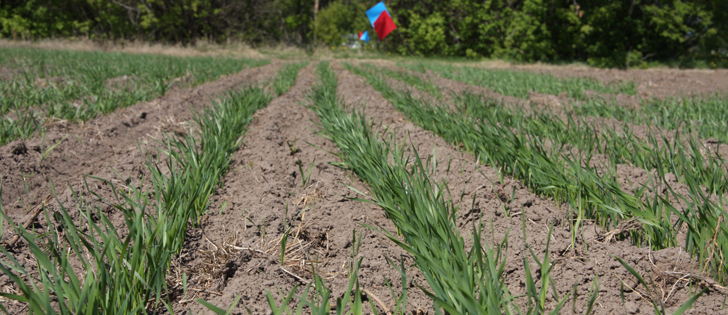
Make time this fall to evaluate your wheat stands and put the information into play for next year.
Soon, the first of the 2016 wheat crop will be emerging. With good conditions for planting emergence should be fairly good. But wheat emergence is something we should get some feedback on.
Ideally in our typical seeding situations we are shooting for about 1.3 million plants per acre and this requires about 19-20 plants per foot of row in 7.5 inch rows. With a seeding rate of around 1.5 million seeds and good emergence, we should get plant stands in this range. With some fall tillering generating an average of 2 to 2.5 tillers per plant, we should be able to end up with a wheat stand with 40-50 heads/foot of row, which often results in a crop with high yield potential. In early seeded wheat, there is some potential for more tillering, so sometimes we can achieve good yields with lower plant populations and seeding rates.
But the bigger issue is when planting into high residue conditions following high yielding soybeans or especially corn. In these situations, we may not always achieve the desired stands in the 19-20 plants/foot of row. In some cases, even with normal mid-season planting dates, it may be good to consider a higher seeding rate in the 1.7 million/acre or 25 seeds per foot of row if stands are not reaching desired levels. So take some time after wheat emergence this fall under different conditions and make some estimates of emergence to use as feedback for seeding rate recommendations for the future. It’s best to do this shortly after emergence before the wheat tillers.
Contact your WSAG Center Sales Rep for any other seeding questions.